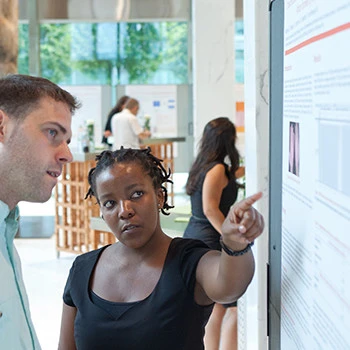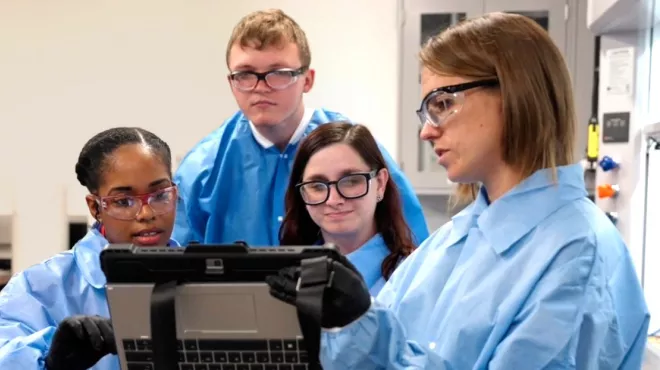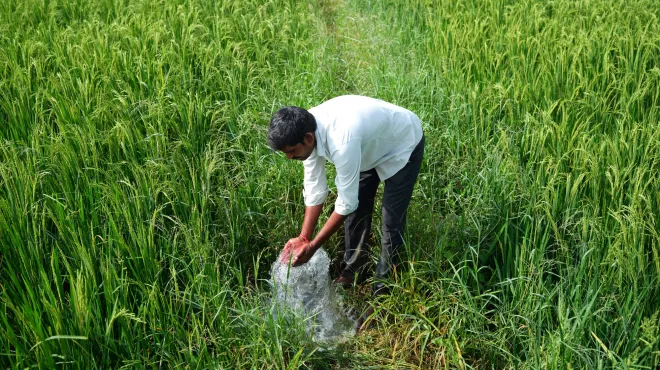“I was very excited – I knew it was something big.”
Dr. Thandiswa Ngcungcu is talking about the moment she discovered the genetic mutation responsible for a rare skin disease called keratolytic winter erythema, or KWE.
“It’s an amazing feeling,” she says. “It is every geneticist’s dream to find a mutation that is the cause of disease. I hope this will go a long way in improving the lives of affected individuals and that it will lead to a treatment one day.”
KWE – known colloquially as Oudtshoorn disease – predominantly affects the Afrikaner population in South Africa and causes redness of the skin on palms and soles. Patients may also experience peeling of large sections of skin, often during winter months. Doctors already knew that KWE was a genetic condition inherited from affected parents, but until Dr. Ngcungcu’s discovery, the specific mutation responsible for KWE was unknown.
A journey of discovery

Dr. Ngcungcu first started working on KWE while studying for her master’s degree. This was based on the suggestion of her supervisor, Prof. Michèle Ramsay, director and research chair at the Sydney Brenner Institute for Molecular Bioscience in South Africa. “She told me people had been looking for this mutation for a long time,” Dr. Ngcungcu says. “It sounded like an exciting challenge.”
Dr. Ngcungcu had the opportunity to take her research to the next level when she was accepted into the Next Generation Scientist program at Novartis in Basel, Switzerland.
“The Next Generation Scientist program contributed a lot to my research,” she says. “The infrastructure and knowledge they had available enabled me to learn new skills, use new machines and techniques, and progress my scientific studies.”
After performing targeted sequencing on a number of individuals both with and without the disorder, Dr. Ngcungcu returned to South Africa to complete her master’s degree. Now fascinated by the topic, she selected KWE as the focus of her Ph.D., using the data generated during her time in Switzerland as the foundation for her research.
From setback to breakthrough
But Dr. Ngcungcu encountered some challenges along the way.
“When we did the initial scientific analyses of the data, we couldn’t find anything,” reveals Dr. Ngcungcu. “I was genuinely freaking out! I thought I’d have to change my Ph.D. project. But then we tried another data analysis technique, which identifies genetic changes in a different way. I ran the analysis and I found a mutation in a region between genes that was present in all the KWE-affected individuals studied.”
This discovery was supported by other research being conducted in this field at the time. A team of scientists also identified a genetic mutation in Norwegian KWE patients, which closely corresponded to that identified in the South African population. This combined evidence enabled Dr. Ngcungcu and her colleagues to characterize the genetic cause of KWE and publish their findings in a leading scientific journal.
It is every geneticist’s dream to find a mutation that is the cause of disease.
Dr. Thandiswa Ngcungcu, University of the Witwatersrand, Johannesburg
While there is currently no cure for KWE, Dr. Ngcungcu’s breakthrough means patients can benefit from an accurate diagnosis and avoid the expense of unnecessary treatments that will not help them. In the longer term, Dr. Ngcungcu is hopeful that the research will lead to an effective treatment and a better understanding of the genetics involved in the development and maintenance of normal skin.
Dr. Ngcungcu is now working at the University of the Witwatersrand in Johannesburg, researching KWE and other skin conditions including albinism. “The discovery around KWE was certainly the highlight of my career so far,” she says. “But I hope that I can make many other discoveries!”
The geneticist who made a breakthrough discovery in a rare skin disease. #NextGenScience



